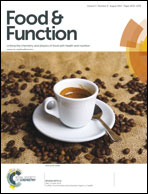Modulation of nitric oxide by flavonoids
Abstract
One of the main mechanisms by which dietary flavonoids are thought to influence cardiovascular disease is via protection of the bioactivity of the endothelium-derived nitric oxide (NO). Additionally, flavonoids may also interfere with the signalling cascades of inflammation and prevent overproduction of NO and its deleterious consequences in shock and ischemia-reperfusion injury. In the present paper we review the evidence of the effects of flavonoids on NO. Flavonoids exert complex actions on the synthesis and bioavailability of NO which may result both in enhanced or decreased NO levels: (1) in cell free systems, several flavonoids may scavenge NO via its pro-oxidant properties by increasing superoxide. However, under conditions of oxidative stress, flavonoids may also protect NO from superoxide-driven inactivation. (2) In intact healthy tissues, some flavonoids increase eNOS activity in endothelial cells. Paradoxically this effect involves a pro-oxidant effect which results in Ca2+-dependent activation of eNOS. As inhibitors of PI3K, flavonoids may potentially inhibit the PI3K/Akt-dependent activation of eNOS. (3) Under conditions of inflammation and oxidative stress, flavonoids may prevent the inflammatory signalling cascades via inhibition of NFκB and thereby downregulate iNOS. On the other hand, they also prevent the overexpression of ROS generating enzymes, reducing superoxide and peroxynitrite levels, and hence preventing superoxide-induced NO inactivation and eNOS uncoupling. Therefore, the final effect of flavonoids on NO levels will depend on the flavonoid structure and the concentrations used, on the cell type under study and particularly on the presence of inflammatory/oxidative conditions.

- This article is part of the themed collection: VI International Conference on Polyphenols and Health

 Please wait while we load your content...
Please wait while we load your content...